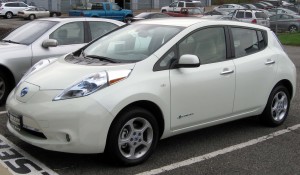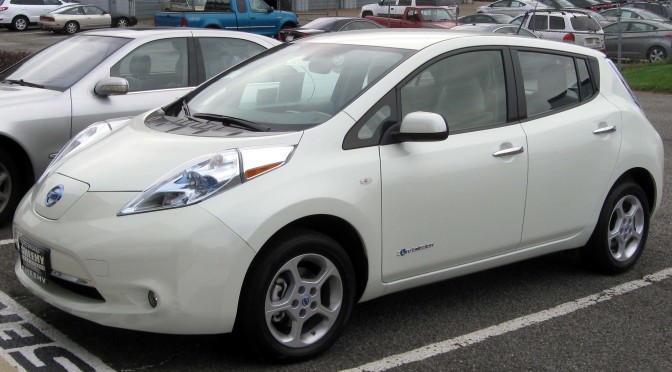The Nissan Leaf is one of my favorite cars currently available in the United States, simply because it’s the most affordable practical electric car you can buy. It’s not as fancy as a Tesla Model S or X, but it’s also more usable for family transportation than any of the micro-electric cars on the market. It competes with a bevy of small cars including its non-hybrid sibling the Nissan Sentra, the Toyota Corolla, Honda Civic, Hyundai Elantra, Kia Soul, Kia Forte, Dodge Dart, Chevrolet Cruze, Mazda 3, Scion xB, and Subaru Crosstrek. However, if you’re looking for an electric car, the field is much simpler. The only other electric cars and hybrids anywhere near in price and size are the Ford Focus Electric, 2nd generation Honda Insight, Toyota Prius, and Chevrolet Volt.
Even though it’s not the most popular car on the roads, the Leaf is still chosen by a number of parents and families for safe, affordable, and child-friendly transportation. I made it my mission to figure out just how child-friendly it was when it came to installing multiple car seats across the back row. Before looking at the results of fitting 3 car seats into the Leaf, however, let’s take a look at some elements of best practices in terms of when and for how long to use infant seats, convertibles combination seats, and booster seats in vehicles.
For me, car seat safety starts with rear-facing your kids as long as you can (ideally until 4!). That’s the safest position and is worth doing as long as possible before forward-facing your little ones in harnessed convertible or combination seats (ideally until 8!). Once they outgrow their harnessed seats, I suggest keeping children in high-back boosters until they’re physically and psychologically ready to use adult seat belt systems (which typically happens between 10 and 12). The goal is to keep kids as safely restrained for as long as possible, as it’s far too late to do anything for your child’s safety in the moment before a collision.
Keeping these ideas in mind, I set to work to find which infant, convertible, combination, and booster seats would work best in 3 across combinations in the Nissan Leaf. This list is likely to be the most complete on the Internet so far; there just isn’t that much information out there on car seats in electric cars yet, though I’m trying hard to change that. If you find the list helpful when shopping for car seats, you can shop through my Amazon link below. I’ll add more seats as I test them over time.
You can access the complete 3 across guide for every vehicle here and the complete list of recommended seats here. The Canadian car seat guide is here. 3 across car seat images are courtesy of Wikipedia.
 2010, 2011, 2012, 2013, 2014, 2015, 2016, 2017 Nissan Leaf
2010, 2011, 2012, 2013, 2014, 2015, 2016, 2017 Nissan Leaf
Guaranteed 3 across installations:
Clek Fllo (x3).
Clek Foonf (x3).
Diono Radian RXT (x3).
Diono Radian R120 (x3).
Diono Radian R100 (x3).
Chicco KeyFit 30 (x3).
Combi Coccoro (x3).
Clek Fllo, Diono Radian / RXT, Diono Radian / RXT.
Chicco KeyFit 30, Clek Fllo, Chicco KeyFit 30.
Tips and Tricks:
The current and only generation thus far of the Nissan Leaf is 175 inches long and just under 70 inches wide, which makes it about typical for a small or compact car in the US. Practically speaking, this means you’re going to be able to fit a number of narrow seats, including several convertible seats and a few infant seats.
Your biggest limitation will be the center seat, which is quite narrow; you’ll only want to use a 17″ seat there (e.g., one of the Dionos or Cleks above). Additionally, the short length of the Leaf means you’ll want to use the angle adjuster to get as much extra room between the car seat and the vehicle’s front seats as possible if you’re planning on rear-facing with a Diono seat; this will give you extra leg room as a driver or front seat passenger.
—
If you find the information on car safety, recommended car seats, and car seat reviews on this car seat blog helpful, you can shop through this Amazon link for any purchases, car seat-related or not. Canadians can shop through this link for Canadian purchases.


